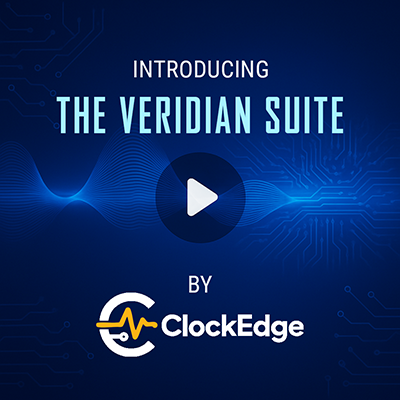
LPDDR (Low-Power Double Data Rate) is a family of DRAM standards from JEDEC optimized for mobile and embedded systems where energy efficiency, thin form factors, and thermals matter as much as raw bandwidth. LPDDR trades the very highest peak performance and capacity of desktop/server DDR for lower I/O voltages, aggressive power-saving modes, and packaging options (e.g., PoP) that minimize board footprint. It is used across smartphones, tablets, ultraportable PCs, AR/VR, automotive ECUs, networking/IoT, and edge AI devices.
Design goals
-
Minimize energy/bit via low I/O voltage, fine-grained power states, and short, efficient bursts.
-
Sustain bandwidth required by cameras, displays, AI inference, and 5G modems without blowing thermal budgets.
-
Shrink system footprint using compact packages (often stacked) and narrow, multi-channel interfaces tailored to SoC floorplans.
-
Keep cost predictable at high volumes with robust training, calibration, and increasingly, built-in reliability features.
Generations at a glance (indicative)
-
LPDDR1 (JESD209) — ~2007; up to ~400 MT/s per pin; first “low-power” DDR for mobile.
-
LPDDR2 (JESD209-2) — ~2009/10; up to ~1066 MT/s; lower voltage, better deep power-down.
-
LPDDR3 (JESD209-3) — ~2012; up to ~1600–2133 MT/s; higher prefetch and improved timing.
-
LPDDR4 / 4X (JESD209-4) — ~2014–2017; dual 16-bit channels per device, 3200–4266 MT/s; “4X” lowers I/O voltage further.
-
LPDDR5 / 5X (JESD209-5) — ~2019–2021; 6400 MT/s baseline, 5X to ~8533 MT/s; adds WCK (data strobe clock), better link training, power states.
-
LPDDR6 (JESD209-6) — 2025; target ~10.7–14.4 Gb/s per pin, new efficiency modes and expanded reliability/management features.
(Exact caps vary by vendor/grade; above are representative figures.)
Architecture & channeling
LPDDR evolved from single wide buses to multiple narrow sub-channels to improve parallelism and reduce toggle energy:
-
LPDDR4/5 devices expose two independent 16-bit channels, enabling concurrent transactions and better QoS for many small engines inside an SoC.
-
LPDDR6 moves to two x12 sub-channels per device with explicit handling of non-payload “metadata” bits, improving concurrency and management without reverting to very wide buses.
Prefetch length increased over time (from 2 → 4 → 8 → 16), letting the core array operate at lower speeds while the I/O runs fast, reducing active power for a given bandwidth.
Power management
Key mechanisms include:
-
DVFS/DVFS-L: Dynamic voltage/frequency scaling (and low-power variants) adapts link energy to workload.
-
Deep/Partial Array Self-Refresh (PASR): Refresh only portions of memory; temperature-compensated refresh reduces unnecessary current.
-
Active power-down / clock-stop / retention states: Fine-grained idle modes for quick entry/exit.
-
Low-voltage I/O: Successive gens reduce VDDQ and refine termination schemes to slash I/O power.
Reliability, safety, and security
As LPDDR has moved into automotive and edge AI, robustness features grew:
-
On-die ECC and parity: Corrects small cell/line faults without host overhead (implementation may vary by vendor/gen).
-
Training/telemetry: Link training, margining, and error counters expose health to the memory controller.
-
Row-activation management: Mechanisms to track/limit activations per row and mitigate disturbance-type effects.
-
Self-test/diagnostics: Built-in routines aid production test and in-field screening.
Packaging & integration
-
PoP (Package-on-Package): Stacks DRAM above the application processor; very short interconnects and small footprint—ubiquitous in phones.
-
Discrete BGA: Used in laptops, automotive, and embedded boards when capacity/thermals exceed PoP limits.
-
MCP/SiP: Multi-chip packages combining LPDDR with flash (e.g., UFS/eMMC) for space-constrained designs.
Controller & PHY considerations
-
Training & calibration: Read/write leveling, DQS alignment, CA training, and per-lane timing.
-
QoS & scheduling: Multi-channel arbitration, bank-group awareness, refresh policing, and latency-sensitive scheduling (e.g., for camera/display).
-
Power-aware policies: Idle timers and burst coalescing to maximize time spent in low-power states.
-
Reliability hooks: Scrubbing, error logging, and proactive page retirement if telemetry signals degradation.
Performance & system design
Bandwidth scales with pin rate and channel count, but energy per bit often dominates design choices. Practical throughput is gated by:
-
SoC traffic patterns (many small, concurrent masters favor multi-channel LPDDR).
-
Thermal headroom (sustained high data rates throttle if heat isn’t managed).
-
Capacity/channel topology (more ranks/banks aid concurrency at some cost in power).
-
Signal integrity/layout (shorter PoP routes save power and timing margin).
LPDDR vs. DDR5 vs. HBM
-
LPDDR: Best for mobile/edge—lowest power/bit, compact, moderate capacities, very good bandwidth for its energy.
-
DDR5: Higher capacities and broader motherboard ecosystems; better for desktops/servers where slots and power exist.
-
HBM: Extreme bandwidth via 3D-stacked TSVs on interposers; highest cost and thermal density, used in GPUs/accelerators.
Use cases
-
Mobile & ultraportables: Imaging pipelines, gaming, on-device AI, and high-refresh displays.
-
Automotive: ADAS, domain controllers, infotainment—needing bandwidth with stringent reliability.
-
Edge/embedded AI: Sensor fusion, local inference with tight power/thermal envelopes.
-
Networking & storage: Control planes and smart NICs where power density is constrained.
Practical checklist for engineers
-
Select the generation based on bandwidth/energy targets and ecosystem maturity (tooling, controllers, availability).
-
Right-size channel count & width for your SoC traffic model (camera/display/AI concurrency).
-
Plan power states early (DVFS tables, idle timers, refresh policies) and validate with workload traces.
-
Surface reliability telemetry (on-die ECC stats, error counters) and schedule scrubbing.
-
Validate thermals under sustained bandwidth; PoP designs need careful heat spreading.
-
Co-design firmware for training, calibration, and low-power entry/exit sequencing.
Outlook
LPDDR’s trajectory continues toward higher per-pin data rates and tighter power controls, while reliability and manageability deepen to support safety-critical and always-on systems. As edge AI workloads proliferate, LPDDR will remain the default memory technology for devices balancing performance with strict energy and form-factor limits.














Quantum Computing Technologies and Challenges